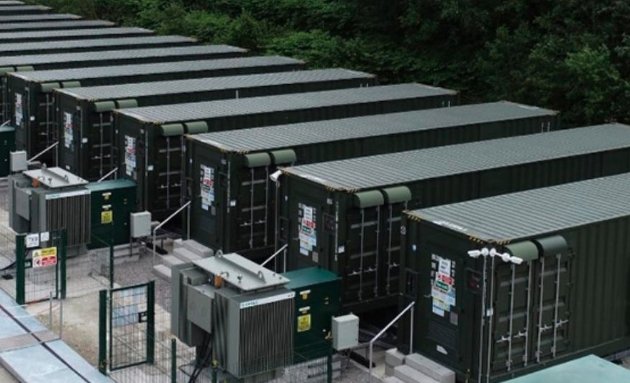A new energy storage facility in West Lothian has been given the green light, marking a significant milestone in Scotland’s shift toward a more resilient, low-carbon electricity future.
The 49.9 MW Battery Energy Storage System (BESS), approved unanimously by the Council’s Development Management Committee, will be Galileo Empower’s first fully consented project in Scotland. Slated for development at Middlerigg Farm—tucked between Bathgate and Armadale near the A801—the site sits close to the Bathgate substation, a critical node for Scotland’s electrical grid.
Clean Power, Stored and Ready
The whole point of battery storage? Catching clean power before it slips away.
Scotland, rich in wind and solar, often generates more electricity than the grid can handle. But that excess—if it’s not used right then—is usually wasted. That’s where BESS comes in.
This new site will store extra power in lithium-ion batteries when demand is low and release it back into the grid when demand spikes. It’s like Tupperware, but for electricity.
Just one sentence here.
This isn’t just about convenience. Grid-balancing systems like this are a major piece of the climate puzzle. Without them, renewables can only take us so far.

The Numbers Behind the Batteries
Let’s break it down:
-
Capacity: 49.9 megawatts—enough to power tens of thousands of homes for several hours.
-
Location: Middlerigg Farm, West Lothian, adjacent to the A801.
-
Developer: Galileo Empower, a pan-European renewable energy firm.
-
Storage Type: Rechargeable battery units, likely lithium-ion.
The project puts West Lothian on the map as a new hub for battery tech in Scotland. It’s a quiet revolution—no turbines, no panels, but critical all the same.
Community Fund Puts Health and Skills First
Laura Petrie, Project Director at Galileo Empower, said the company didn’t just want to install batteries and leave town.
Instead, they’ve promised a community benefit fund, with a focus on two major priorities:
-
Health and physical activity initiatives
-
Training and education programs
They also pledged to use local suppliers and contractors “wherever reasonably possible” throughout the build and operational phases.
That could mean local jobs—not just short-term construction gigs, but longer-term technical roles and support services tied to the battery facility’s maintenance and monitoring.
It’s a big win for the area, which has seen energy and infrastructure projects come and go without always leaving something behind.
A Changing Energy Landscape in Scotland
This battery storage facility is part of a broader movement reshaping Scotland’s energy backbone.
The nation already generates the equivalent of over 100% of its electricity demand from renewables—but without reliable storage, much of that energy gets curtailed when the grid gets overloaded.
Battery systems help prevent that waste. More importantly, they help Scotland rely less on:
-
Imported fossil fuels from politically unstable regions
-
Price-volatile gas markets that drive up household energy bills
-
Carbon-intensive “peaking” power plants that kick in when renewables can’t keep up
That’s not just good for the planet—it’s a way to protect pocketbooks too.
Scotland’s BESS Sector Is Heating Up
This isn’t a one-off.
Battery Energy Storage Systems are popping up all over the UK, and Scotland is no exception. With rising electricity demand, aging grid infrastructure, and net-zero deadlines looming, energy storage is now just as critical as generation.
Here’s a look at how BESS projects stack up across Scotland:
| Project Name | Capacity (MW) | Location | Developer |
|---|---|---|---|
| Middlerigg BESS | 49.9 | West Lothian | Galileo Empower |
| Auchteraw Battery Park | 20 | Fort Augustus | Statera Energy |
| Glenmuckloch BESS | 30 | Dumfries & Galloway | Buccleuch Renewables |
| Kilmarnock South BESS | 50 | East Ayrshire | Zenobē Energy |
One sentence here.
The race is on to ensure Scotland’s grid isn’t just green—but smart and flexible, too.
Final Thoughts from the Project Team
Petrie summed up the project’s approval with cautious optimism.
“We’re delighted,” she said after the Council vote. “Infrastructure like this plays a key role in the shift from polluting fossil fuels to clean, green, renewable energy. It supports the fight against climate change and helps Scotland reach its net-zero targets.”
She added, “We believe this project will deliver significant environmental and economic benefits to West Lothian… bringing substantial investment, creating jobs, and enhancing the skills of our current and future workforce.”
The Middlerigg BESS might not make front-page headlines the way giant wind farms or hydrogen trials do—but quietly, efficiently, it could help keep the lights on. And not just today, but in the decades to come.


















